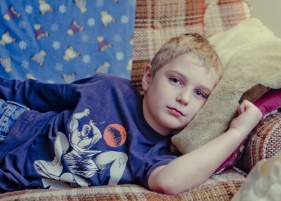After My Headache: Migraine Postdrome in Children
Detecting migraine in children is a challenge, and there is a lot that we simply do not understand about how migraine attacks affect this population. A new study out of France is answering a question many did not even think to ask – what are some of the symptoms that children and adolescents experience after the main attack (which usually features a headache)?
100 children and adolescents with migraine were interviewed by phone. They were asked specifically about symptoms that began after the headache phase of the attack, as well as symptoms that simply continued afterwards. (See study abstract: Postdrome symptoms in pediatric migraine)
 91% reported symptoms that persisted after the attack. Here are the ones that were the most common:
91% reported symptoms that persisted after the attack. Here are the ones that were the most common:
- Asthenia (weakness and/or a lack of energy)
- Cognitive difficulties (trouble thinking)
- Pallor (paleness)
- Cognitive slowing (slow/foggy thinking)
- Loss of appetite
- Sleepiness/drowsiness
- Nausea
“True postdrome” refers to symptoms that actually start after the headache phase. The most common symptoms in this category, reported by 82% of patients, were:
- Thirst
- Sleepiness/drowsiness
- Visual disturbances
- Food cravings
- Paraesthesias (sensations such as “pins and needles”)
- Eye pain
For most patients these symptoms lasted less than 12 hours.
This is an absolutely fascinating study that will help both adults and children understand migraine symptoms better. The postdrome is very common. There is so much focus on the headache that we often miss the other symptoms, some of which are quite debilitating. Recognizing these symptoms in children (and adults) will not only help us recognize migraine, but also treat it in a more understanding way.
We’ve also talked about warning signs of migraine in children. You’ll want to check that out too.
If you have a child with migraine, have you noticed any of these? Adults, have you noticed any of these symptoms in yourself? Leave a comment and let’s talk about it.
